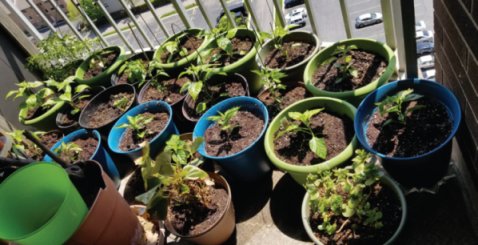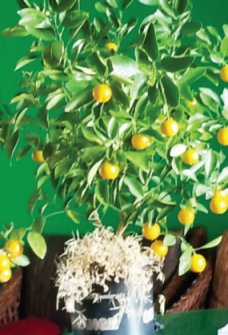
By: Joe Mauricio
Even if you have a small space living in an urban setting, you can still benefi t from growing anything, from fl owering shrubs to vegetable/ fruit gardens. After downsizing to a small apartment with a little balcony a couple of years ago, I still manage to grow my favorite pepper plants varieties, kalamansi, malunggay, lemongrass, and tomato plants, together with some fl owering plants to attract pollinators (bees, butterfl ies, etc.).
Any urban gardener can enjoy vegetables and fl owers in pot containers which can be transformed into thriving city gardens. They can easily be incorporated into any existing patios, balconies, or rooftop gardens.
Growing vegetables in a pot is more versatile than one might think. Pot-grown vegetables will produce an adequate supply of produce for the urban gardener while eliminating the hassles of large garden plots. Growing vegetables in pot containers is one of the easiest ways to create a city vegetable garden. You can grow anything from lettuce to tomatoes to peppers; You can even grow potatoes. As long as there is adequate drainage in the container, nearly anything can be used to grow vegetables. Typically, smaller pots or containers are used for more shallow- rooted crops like carrots, lettuce or radishes.
In order to help improve drainage and airfl ow, it may be a good idea to raise your container an inch off the fl oor with blocks. Place vegetables in the sunny area that is well-protected from wind which can dry the plants. Container plants require more watering to prevent from drying out.
In my case, my balcony is my solitude, and also serves as an excellent way to enjoy growing vegetables, flowers, and even fruits. In addition, balcony or rooftop can absorb rainfalls as much as garden plots.
Alternative vegetables can be grown in hanging baskets. Hanging baskets can be placed wherever space allows and accommodates many types of vegetables.
I purchased my pepper seeds from the Pepper Institute of the University of New Mexico in Las Cruces. I always start the seedlings around February to be transferred to much bigger pot containers around May;
Sorry, I forgot to mention about my ever-growing tall cherry moya fruit tree that I cannot move away from our bedroom window to bring out to the balcony due to its weight, but you can enjoy the picture.##


 VIA Times – May 2019 Issue Vital News, Vibrant VIews for Asian Americans in Chicago & Midwest
VIA Times – May 2019 Issue Vital News, Vibrant VIews for Asian Americans in Chicago & Midwest

